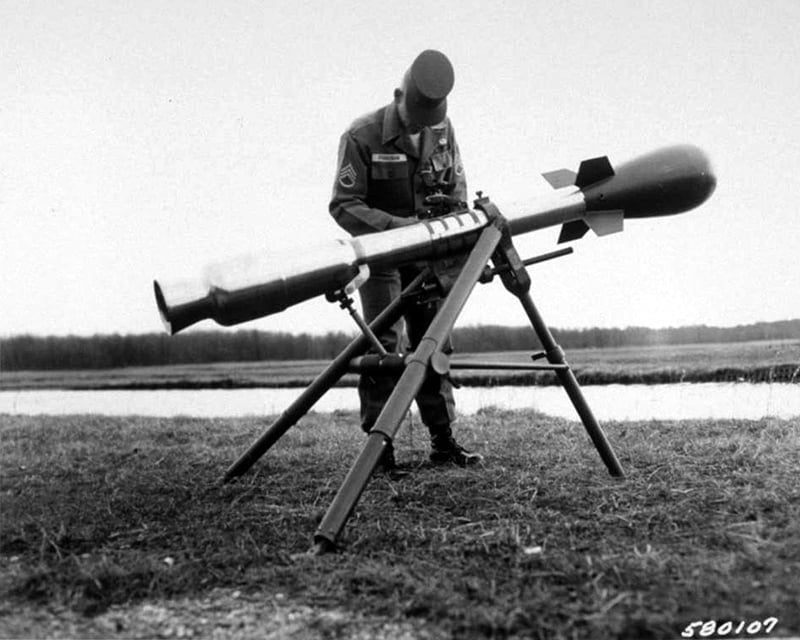Nuclear bazooka

https://en.m.wikipedia.org/wiki/Davy_Crockett_(nuclear_device)
But I would like to say that it’s rarely the scientists pushing the morally corrupt inventions. It’s the suits
Holy shit, the Fatman from Fallout is real ‽
If you’re ever in Albuquerque, New Mexico you can see it in the nuclear museum (can’t recall what it’s specifically called)
This seems like a rather self-defeating weapon really.
How was that weapon supposed to work? “Stay back or we will irradiate our own forces”. It’s not much of a threat is it.
“Do you want this territory? Because we can give you this territory…”
The yield is small enough that it isn’t a threat to the soldiers launching it. Still, I wouldn’t want to be the one tasked with firing it.
In a similar vein, Project Pluto. Essentially a nuclear ramjet that could fly 150m off the ground at 3,700 km/h, was impossible to intercept at the time, could carry sixteen nuclear warheads and crop-dusted the earth with radiation everywhere it went. It was eventually cancelled for being “too provocative.” Which, coming from the US army, is quite a thing lol.
The people over at NCD must be getting raging hardons just from seeing this.
Alfred Nobel, the originator of the Nobel prize, invented dynamite believing mutually assured destruction would end war.
Your comment is only technically correct, so I am gonna add to that:
Alfred Nobel did invent dynamite and was also a believer in mutually assured destruction, BUT: those two facts are not directly connected.
Dynamite in itself was not intended for warfare, but for mining. It was still relatively unstable so not really suited for warfare. (TNT, which came around 1900, solved that problem.)
Nobel did invent smokeless powder for warfare and he transformed Bofors into an arms manufacturing company though.
https://www.nobelprize.org/alfred-nobel/alfred-nobels-thoughts-about-war-and-peace/
To be fair, mutually assured destruction likely will end war but maybe not in the way we hope.
To be fair, it has been holding off nuclear war since 1949.
That assumes that you believe that the world would be a safer place if only one nation had nuclear weapons. I would imagine that would be the least safe of all possible scenarios.
If everyone has nuclear weapons at least there is the possibility they will never be used. If they are used it basically ensures the end of the world so, swings and roundabouts.
Leaded gasoline, CFC’s as a propellant… generally Thomas Midgely, Jr.
It’s not quite the same since there was no reason to believe CFCs would be dangerous. They checked for toxicity to humans and that was about it. It never occurred to anyone to simulate interactions with atmospheric particles, meteorological science was almost non-existent back then, it was essentially just limited to weather forecasting.
It never occurred anyone to worry to about what might happen 100+ years in the future.
But yeah he had absolutely no excuse for lead in gasoline, as far back as the Romans we knew lead was toxic.
Putting chili directly in the bag of Fritos.
Chocalate in peanut-butter, while we’re at it
I’m just going to leave this here
Dear God! (said as a devout agnostic).
You just found religion and immediately denounced it through blasphemy, you heathen!
I’m amazed that Project Orion went on as long as it did.
That link doesn’t work for me, so incase anyone has the same issue… [Project Orion](https://en.m.wikipedia.org/wiki/Project_Orion_(nuclear_propulsion\))
Trick is to add a backslash before the two closing brackets, like this:

Edward Teller is just the kind of scientist you need to build civil engineering projects out of doomsday devices.
Including political science?






